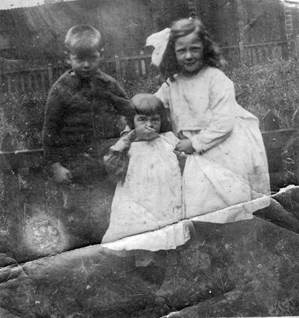 According to the website, Suppedaneum’s mission is, in part, to probe the relationship between music and composition. All the more reason to pay special attention to the score that accompanies The Letter, Joseph Clayton Mills's 22-minute cassette EP that comes close to not being an EP at all. With the exception of the first, each of the 100 cassettes that Mills assembled for this project is a hand-duplicated copy of an earlier copy. Thanks to the technological shortcomings of the medium, successive renderings of The Letter past the first contain imperfections not present in previous versions, meaning each tape is a uniquely worn-down object. As the liner notes put it, "The Letter is a piece of music designed to approach disappearance." Strangely, the music is not a performance of the aforementioned score, a piece titled Abscission that comprises the images of two trees and three pairs of musical staves. The tape’s sine tones, Throbbing Gristle-like noises, and warped piano phrases were inspired by those images, but the disconnect between them predominates. It’s one of the ways in which Joseph distills the disjunction and cohesion between sound and writing.
According to the website, Suppedaneum’s mission is, in part, to probe the relationship between music and composition. All the more reason to pay special attention to the score that accompanies The Letter, Joseph Clayton Mills's 22-minute cassette EP that comes close to not being an EP at all. With the exception of the first, each of the 100 cassettes that Mills assembled for this project is a hand-duplicated copy of an earlier copy. Thanks to the technological shortcomings of the medium, successive renderings of The Letter past the first contain imperfections not present in previous versions, meaning each tape is a uniquely worn-down object. As the liner notes put it, "The Letter is a piece of music designed to approach disappearance." Strangely, the music is not a performance of the aforementioned score, a piece titled Abscission that comprises the images of two trees and three pairs of musical staves. The tape’s sine tones, Throbbing Gristle-like noises, and warped piano phrases were inspired by those images, but the disconnect between them predominates. It’s one of the ways in which Joseph distills the disjunction and cohesion between sound and writing.
A phrase like "the letter" possesses clout. It means "the letter I received from my parents" or "the letter he wrote to me." Significance is implied. That’s true even if what is meant is something like "the letter S" or "the letter of the law." Mills could have intended any of those things and in different ways The Letter touches on each one. The piece begins with someone (or something?) reciting the English alphabet and ending on the letter "zed"—not "zee"—which might say something about the speaker’s origin or the recording’s original use. It then introduces a piano melody (letters A through G) and concludes with a story that sounds familial, a recollection of how someone came to be who they are and where they are. Law is in there too, in the confusion of compositional fidelity and performance.
But the familial tint is strongest. It stands out against the field recordings, buzzing plastic, and metallic howls. It’s the thing the ears strain to hear as the sound of a busy market blows through the speakers and it’s the element that draws the drama of the surrounding noise to it, as if by gravity—the voice of someone explaining what it was like to be poor at the end of the Great Depression, to pick strawberries for two cents a quart during the summer, and to deal with the hardships of a massive flood afterward.
Even if the narrator and Mills aren’t related, the details resonate empathetically. How else to interpret the black-and-white photograph of "Violet Cowie and her siblings" included in the set, apparently taken in Scotland, or Joseph’s decision to assemble in one place sounds recorded between 1989 and 2015? That span of time suggests someone thinking about the past. It’s a recollection that parallels the anonymous narrator’s. The music is another layer in that nexus, residing somewhere between the certainty of the details and the ambiguity of the score, which might remind some of a family tree and others of the cycle of the seasons.
Abscission is what trees and plants do when they drop their leaves, needles, or fruit, usually to protect themselves, as in winter, or to reproduce. In the case of The Letter, it’s the process by which music, time, and memory are cut away. And as with the trees, something persists after the foliage falls. It takes root in innuendos and multiplicities and subsists through silences and interruptions even as it disappears into the past.
samples:
 
Read More

